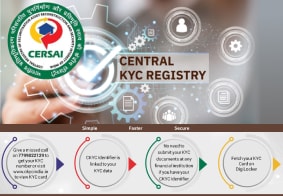CKYC Registry
-
Customer Service Contact us Service request Locate a branch
Find all the help you need
Scan the QR, get our app, and find help on your fingertips

Help CenterSupport topics, Contact us, FAQs and more
-
Login
Are you ready for an upgrade?
Login to the new experience with best features and services
-
Login
Are you ready for an upgrade?
Login to the new experience with best features and services
- Accounts
-
Deposits
IDFC FIRST Bank Deposits
View all Deposits -
Loans
IDFC FIRST Bank Loans
View all Loans - Wealth & Insure
-
Payments
IDFC FIRST Bank Payments
View all Payments -
Cards
IDFC FIRST Bank Cards
View all Cards - Blogs
- Corporate Account
-
Cash Management Services
IDFC FIRST Bank Cash Management Services
View all Cash Management Services - Supply Chain Finance
-
Corporate Lending
IDFC FIRST Bank Lending
View all -
Treasury
IDFC FIRST Bank Treasury
See more details - NBFC Financing
Support topics, Contact us, FAQs and more
- IDFC FIRST Bank Accounts
-
Savings Account
-
Corporate Salary
Account -
Senior Citizens
Savings Account -
First Power
Account -
Current Account
-
NRI Savings
Account -
TASC Institutional
Account -
Savings Account
Interest Calculator
- IDFC FIRST Bank Deposits
-
Fixed Deposit
-
Recurring Deposit
-
NRI Fixed Deposit
-
Safe Deposit Locker
-
FD Calculator
-
RD Calculator
- IDFC FIRST Bank Loans
-
Personal Loan
-
Consumer Durable
Loan -
Home Loan
-
Business Loan
-
Professional Loan
-
Education Loan
-
New Car Loan
-
Pre-owned Car Loan
-
Two Wheeler Loan
-
Pre-owned Two
Wheeler Loan -
Commercial Vehicle
Loan -
Gold Loan
-
Loan Against Property
-
Loan Against Securities
-
Easy Buy EMI card
-
Personal Loan
EMI Calculator -
Education Loan
EMI Calculator -
Home Loan
EMI Calculator
- IDFC FIRST Bank Wealth & Insure
-
FIRST Select
-
FIRST Wealth
-
FIRST Private
-
Mutual Funds
-
Sovereign Gold Bond
-
Demat Account
-
Term Insurance
-
Life Insurance
-
Health Insurance
-
General Insurance
-
Bonds
-
Loan Against
Securities -
Portfolio Management
Service
- IDFC FIRST Bank Payments
-
FASTag
-
Credit Card
Bill Payments -
UPI
-
Funds Transfer
-
Forex Services
-
Pay Loan EMI
- IDFC FIRST Bank Cards
-
Ashva :
Metal Credit Card -
Mayura :
Metal Credit Card -
FIRST Millennia
Credit Card -
FIRST Classic
Credit Card -
FIRST Select
Credit Card -
FIRST Wealth
Credit Card -
FIRST WOW!
Credit Card -
Deals
-
Debit Cards
-
Co-branded Cards
-
Credit Card
EMI Calculator -
FIRST Corporate
Credit Card -
FIRST Purchase
Credit Card -
FIRST Business
Credit Card
- Premium Metal Credit Cards
-
AshvaLifestyle1% Forex₹2,999
-
MayuraLifestyleZero Forex₹5,999
-
FIRST PrivateInvite Only
- Best for travellers
-
MayuraZero ForexMetal₹5,999
-
Ashva1% ForexMetal₹2,999
-
FIRST WOW!Zero ForexTravelLifetime Free
-
FIRST SWYPTravel OffersEMI₹499
-
FIRST Select1.99% ForexLifestyleLifetime Free
-
FIRST Wealth1.5% ForexLifestyleLifetime Free
-
Club VistaraTravelLifestyle₹4,999
-
IndiGo IDFC FIRST Dual Credit CardTravelLifestyle₹4,999
- Max benefits, Free for life
-
FIRST Classic10X RewardsShoppingNever Expiring Rewards
-
FIRST Millennia10X RewardsShoppingNever Expiring Rewards
-
FIRST Select10X RewardsLifestyle1.99% Forex
-
FIRST Wealth10X RewardsLifestyle1.5% Forex
-
FIRST WOW!RewardsTravelZero Forex
-
LIC ClassicRewardsInsuranceShopping
-
LIC SelectRewardsInsuranceShopping
- Reward Multipliers
-
AshvaLifestyleMetal₹2,999
-
MayuraLifestyleZero Forex₹5,999
-
FIRST ClassicNever Expiring RewardsShoppingLifetime Free
-
FIRST MillenniaNever Expiring RewardsShoppingLifetime Free
-
FIRST SelectNever Expiring RewardsLifestyleLifetime Free
-
FIRST WealthNever Expiring RewardsLifestyleLifetime Free
- Rewards & Credit on UPI
-
FIRST Power+FuelUPI₹499
-
FIRST PowerFuelUPI₹199
-
FIRST EA₹NVirtual1% Cashback₹499
-
FIRST DigitalVirtualUPI₹199
-
IndiGo IDFC FIRST Dual Credit CardUPITravelDual cards
- Fuel and Savings
-
FIRST PowerRewardsUPI₹199
-
FIRST Power+RewardsUPI₹499
-
LIC ClassicRewardsInsuranceShopping
-
LIC SelectRewardsInsuranceShopping
- Express and Flaunt
-
AshvaMetal1% Forex₹2,999
-
MayuraMetalZero Forex₹5,999
-
FIRST SWYPEMIOfferMAX₹499
-
FIRST MillenniaRewardsShoppingLifetime Free
- FD Backed rewarding Credit Cards for all
-
FIRST EA₹NVirtualCashback₹499
-
FIRST WOW!Zero ForexTravelLifetime Free
-
CreditPro Balance TransferTransfer & SaveReduce InterestPay Smartly
- IDFC FIRST Bank NRI Forex Solutions
-
Send money to India-Wire transfer
-
Send money to India-Digitally
-
Send money abroad
-
Max Returns FD (INR)
- IDFC FIRST Bank MSME Accounts
-
Platinum Current
Account -
Gold
Current Account -
Silver Plus
Current Account -
Merchant Multiplier
Account -
Agri Multiplier
Account -
TASC Institutional
Account -
Dynamic Current
Account -
World business
Account -
First Startup
Current Account
- IDFC FIRST Bank Business Loans
-
Business Loan
-
Professional Loan
-
Loan Against Property
-
Business Loan for Women
-
Working Capital Loan
-
Construction Equipment Loan
-
Machinery Loan
-
Healthcare Equipment Loan
- IDFC FIRST Bank Business Solutions
-
Payment Solutions
-
Tax Payments
-
Doorstep Banking
-
Point of Sale (POS)
-
Escrow Accounts
-
NACH
-
Payment Gateway
-
UPI
-
Virtual Accounts
-
As per amendment in the Income Tax Rules, PAN or Aadhaar are to be mandatorily quoted for cash deposit or withdrawal aggregating to Rupees twenty lakhs or more in a FY. Please update your PAN or Aadhaar. Kindly reach out to the Bank’s contact center on 1800 10 888 or visit the nearest IDFC FIRST Bank branch for further queries.
-
-
Most Searched
Sorry!
We couldn’t find ‘’ in our website
Here is what you can do :
- Try checking the spelling and search
- Search from below suggestions instead
- Widen your search & try a more generic keyword
Suggested
Get a Credit Card
Enjoy Zero Charges on All Commonly Used Savings Account Services
Open Account Now
Personal Loan
What is loan insurance?
Key Takeaways
Loan insurance provides financial protection by paying outstanding loan instalments in the event of death, disability, or a loss of employment.
It is useful for long-term loans such as home loans.
Borrowers should compare the cost of insurance premiums against the actual risk before purchasing loan insurance.
Loans have become an essential part of fulfilling dreams. It can be owning a home, buying a car, or pursuing higher education but with borrowing comes a significant responsibility - its repayment. Life is unpredictable, and unforeseen events like job loss, illness, disability, or even death can affect a borrower's ability to repay the loan. This is where loan insurance steps in as a crucial financial safety net. In this article, know all about loan insurance, its types and more.
What is loan insurance?
Loan insurance is financial protection that covers borrowers against sudden life events like death, disability, or loss of employment. If the borrower is unable to repay the loan due to such events, the policy pays the outstanding balance, and therefore, the family is not responsible for the burden of loan repayment. Buying loan insurance is optional, but majority of lenders suggest it as a layer of extra protection.
How does loan insurance work?
If a borrower takes a loan, they can choose loan insurance by paying a premium in advance or by paying the premium in instalments along with the Equated Monthly Instalments (EMIs) of their loan. In case of an insured incident, like a serious illness or accident resulting in disability, the insurance company pays the outstanding loan amount.
Types of loan insurance
Loan insurance policies vary depending on the loan type and coverage. Some of these are:
- Life cover loan insurance clears the loan outstanding amount in case of the borrower’s death.
- Job loss cover pays EMIs for a specific term in case of sudden loss of employment.
- Critical illness cover repays the loan in case of critical illness.
- Disability cover assists in loan repayment in case of permanent disability that affects income.
Is loan insurance necessary?
While loan insurance is not mandatory, it still provides peace of mind, particularly for long-term loans like home loans that need to be paid off over decades. Insurance is not always required for less-than-a-decade credits like personal loans since they are unsecured and generally have more manageable repayment terms.
Financial security isn’t just about savings – it’s also about making informed borrowing decisions.
FIRSTmoney: A smarter personal loan choice
FIRSTmoney provides a risk-free and hassle-free borrowing experience for those who need quick funds without the extra cost of loan insurance. With loan amounts between ₹ 50,000 [DN1] and ₹ 10 lakhs, borrowers can avail loans without collateral or mandatory insurance policies.
They can select their repayment schedules between 9 to 60 months based on their ability to pay EMIs. The low personal loan interest rate of 10.99% and an end-to-end digital application process help in quick approvals and disbursals within 30 minutes. Moreover, there are no foreclosure charges so borrowers can repay early without any additional fee. Check your personal Loan eligibility now!
Conclusion
Loan insurance may be an important safeguard in the case of long-term and high-value loans. Yet in short-term money requirements, an easy lending service such as a smart personal loan can turn out to be better.
Refer to the EMI calculator to calculate EMIs for your next car, two-wheeler, home loan, etc.
Frequently Asked Questions
What exactly is loan insurance?
Loan insurance is an optional protection policy linked to a loan. It is designed to cover outstanding dues when specific insured events happen, as defined in the policy. Typical covers include death, permanent disability, critical illness, or job loss, subject to inclusions, exclusions, and claim conditions. If a valid claim is approved, the insurer settles eligible amounts with the lender. Review benefits, waiting periods, claim process, and costs before deciding.
Do I need to buy loan insurance for a personal loan?
Whether to buy loan insurance depends on the product and your comfort with risk. Some offers present it as an add on, while others may not include it. Consider your dependants, existing insurance, emergency reserves, and job stability. Read the Key Fact Statement and policy brochure to see coverage, exclusions, cost, and cancellation timelines. You can compare third party covers too. Choose what fits your budget and overall protection plan.
How does loan insurance protect me?
Protection works through claims. If a covered event occurs and the insurer accepts the claim, the insurer pays eligible amounts toward the loan as per terms. That can reduce or clear dues, easing pressure on household cash flow. It may also help avoid missed EMIs while matters are resolved. Outcomes depend on coverage type, sums insured, exclusions, waiting periods, and documentation. Keep copies of policy, premium receipts, and contact details.
Is loan insurance mandatory with IDFC FIRST Bank?
Requirements can vary by product and time. Some journeys may present insurance as an option, while others may not display it. To confirm the current position for your application, check the Key Fact Statement, MITC, and the offer screen in the app. Ask whether acceptance is optional and whether alternatives exist. Always review benefits, exclusions, premium, and cancellation rules before you decide. Request written clarification if anything feels unclear today.
How much does loan insurance cost?
Cost depends on cover amount, borrower age, tenure, loan size, insurer underwriting, and taxes. Pricing is usually shown as a one-time premium or as financed premium added to the loan. Review the illustration alongside your offer to see total premium, GST, and any interest if financed. Compare scope of cover, not only price. Check renewal rules if the tenure exceeds policy duration, and keep the premium receipt securely somewhere.
Can I cancel my loan insurance later?
Policy contracts specify cooling off or free look periods and later cancellation rules. During the free look window, you can usually review terms and ask for cancellation as per insurer process. After that, refunds and surrender values depend on policy type and elapsed time. Check who the policyholder is, whether premium was financed, and how refunds are credited. Always read the insurer’s document and keep acknowledgements for your records carefully.
Disclaimer
The contents of this article/infographic/picture/video are meant solely for information purposes. The contents are generic in nature and for informational purposes only. It is not a substitute for specific advice in your own circumstances. The information is subject to updation, completion, revision, verification and amendment and the same may change materially. The information is not intended for distribution or use by any person in any jurisdiction where such distribution or use would be contrary to law or regulation or would subject IDFC FIRST Bank or its affiliates to any licensing or registration requirements. IDFC FIRST Bank shall not be responsible for any direct/indirect loss or liability incurred by the reader for taking any financial decisions based on the contents and information mentioned. Please consult your financial advisor before making any financial decision.
The features, benefits and offers mentioned in the article are applicable as on the day of publication of this blog and is subject to change without notice. The contents herein are also subject to other product specific terms and conditions and any third party terms and conditions, as applicable. Please refer our website www.idfcfirstbank.com for latest updates.























